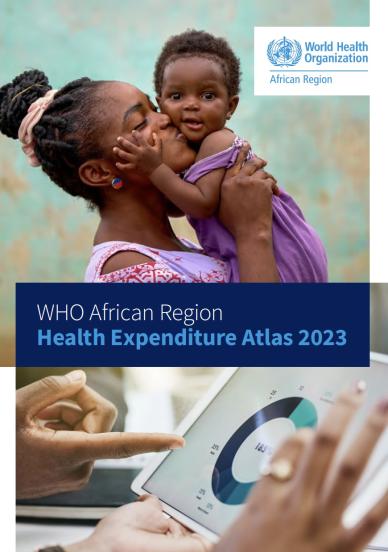
WHO African Region Health Expenditure Atlas 2023
Over the past decade, countries in the African region experienced slow progress in mobilizing resources for health while facing continued challenges. In their revised estimates published in 2017, Stenberg et al., developed two costs scenarios, termed progress and ambitious, aimed at strengthening comprehensive health service delivery to achieve SDG 3 and universal health coverage in low-income and middle-income countries (Stenberg et al., 2017). Out of the 47 countries in the WHO African region only eight, on average, met the recommended threshold of spending a minimum of US$ 249 per capita on health during the period from 2012 to 2020. In 2020, this achievement was observed in only five countries while the remaining countries spent less than US$ 249 per capita, with health expenditures ranging from US$ 16.4 to US$ 236.6, highlighting significant disparities across the region.
We noted a gradual improvement in domestic general government spending on health as a share of total government expenditure, showcasing that several countries are allocating more financial resources to health from domestic sources, thus reflecting increased prioritization of health by African governments. Despite this improvement, only one country, South Africa, achieved and sustained the Abuja Declaration target of allocating and spending at least 15% of government expenditure on health from 2014 to 2020. In 2020, domestic general government spending on health as a share of total government expenditure ranged from 2.1% to 12%, highlighting the large variations that exist among countries and the limited capacity of raising public resources for health in many African countries.
The landscape of Out-of-pocket payments (OOP) as a percentage of current health expenditure continues to vary widely across countries in the region. While evidence recommends that OOP should not exceed 15-20% of current health expenditure to ensure that health services are affordable and accessible to all (Xu et al., 2010), OOP accounted for an average of 35.8% of current expenditure on health from 2012 to 2020. This stresses that OOP continue to be a major funding source for health expenditure, posing a high risk of financial hardship, particularly for vulnerable populations.
The extent of other private domestic health expenditure (excluding OOP spending) in the African Region has remained relatively modest, ranging between 7% and 10% of the current health expenditure throughout the period from 2012 to 2020. This underlines the constrained capacity of countries to engage the private sector in funding health and establishing prepayment schemes, essential components in the pursuit of universal health coverage and social health protection.
External funding remains a vital financial pillar for the region. In half of the countries, external resources constituted more than 20% of current health expenditures from 2012 to 2020. This significant reliance on external funding raises concerns about the sustainability of health achievements, particularly in the context of the COVID-19 pandemic, other emerging and re-emerging diseases, and the epidemiological transition.


